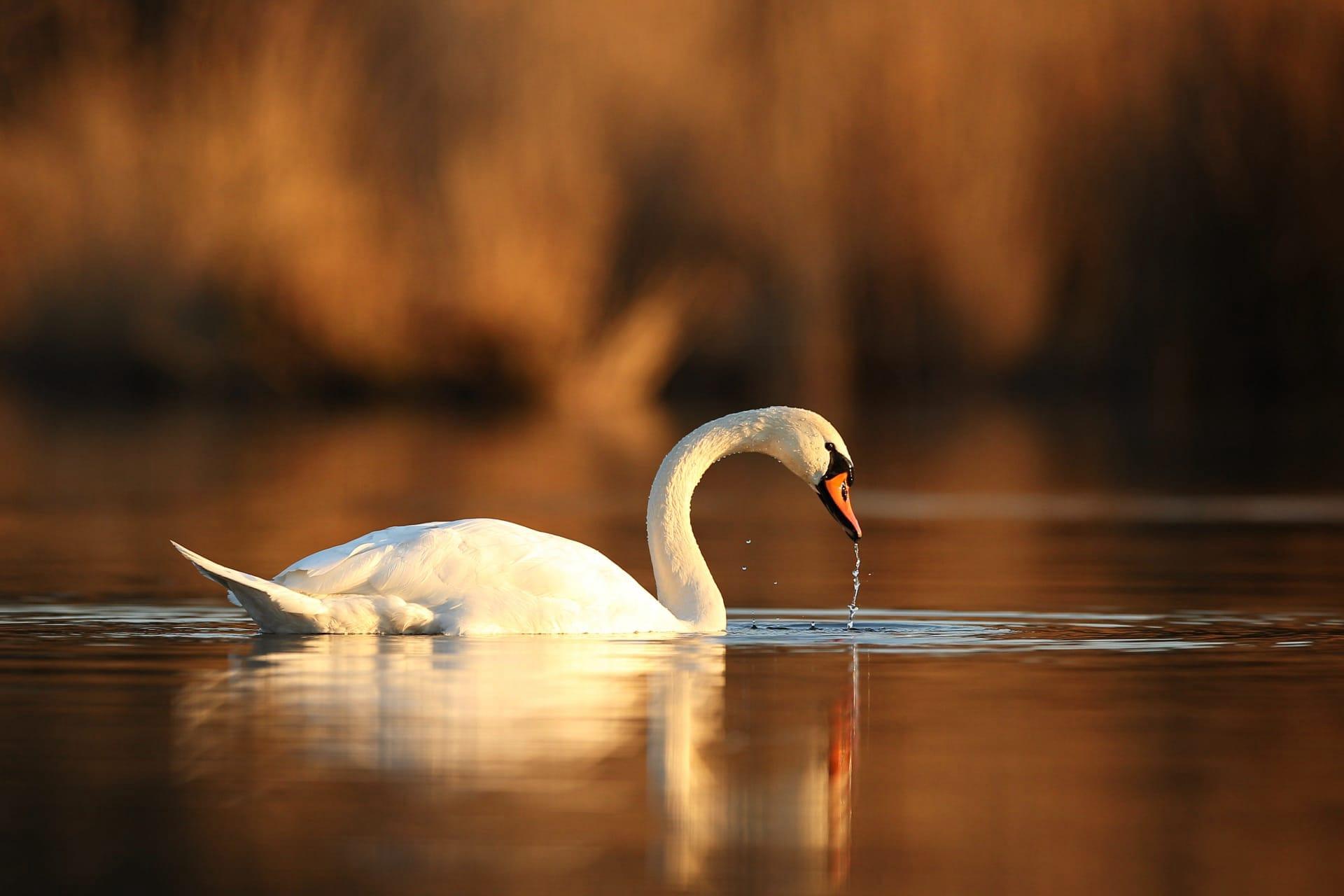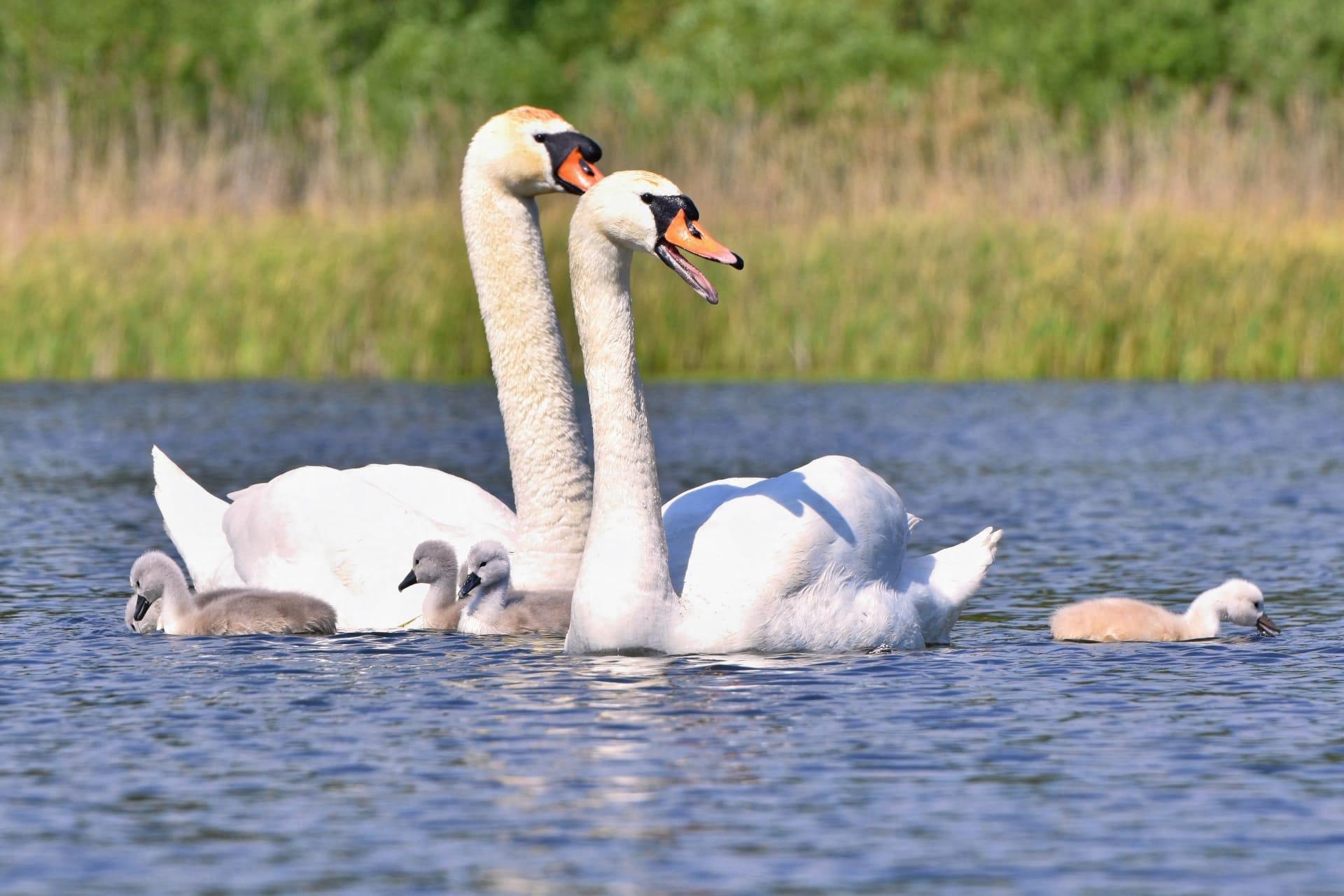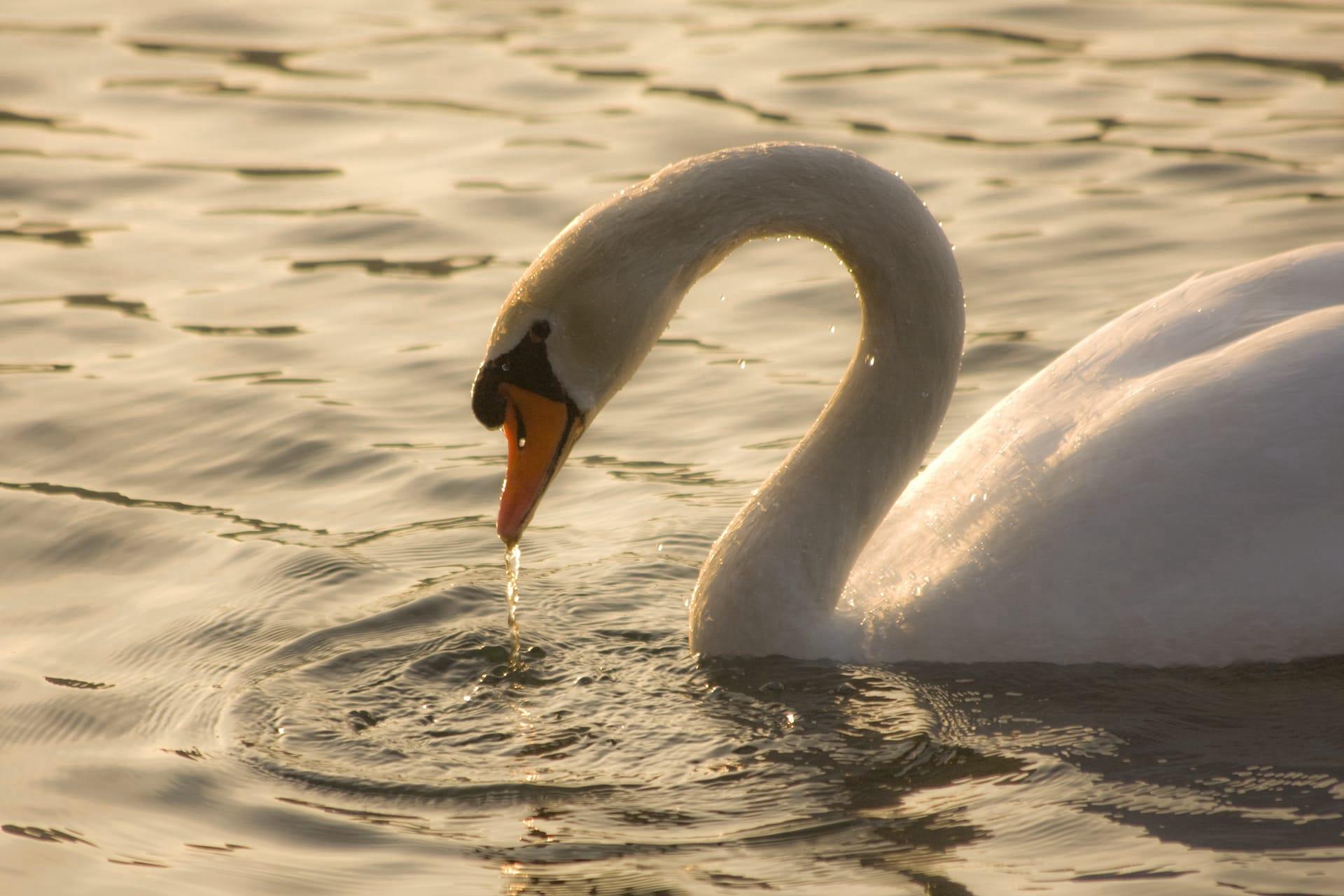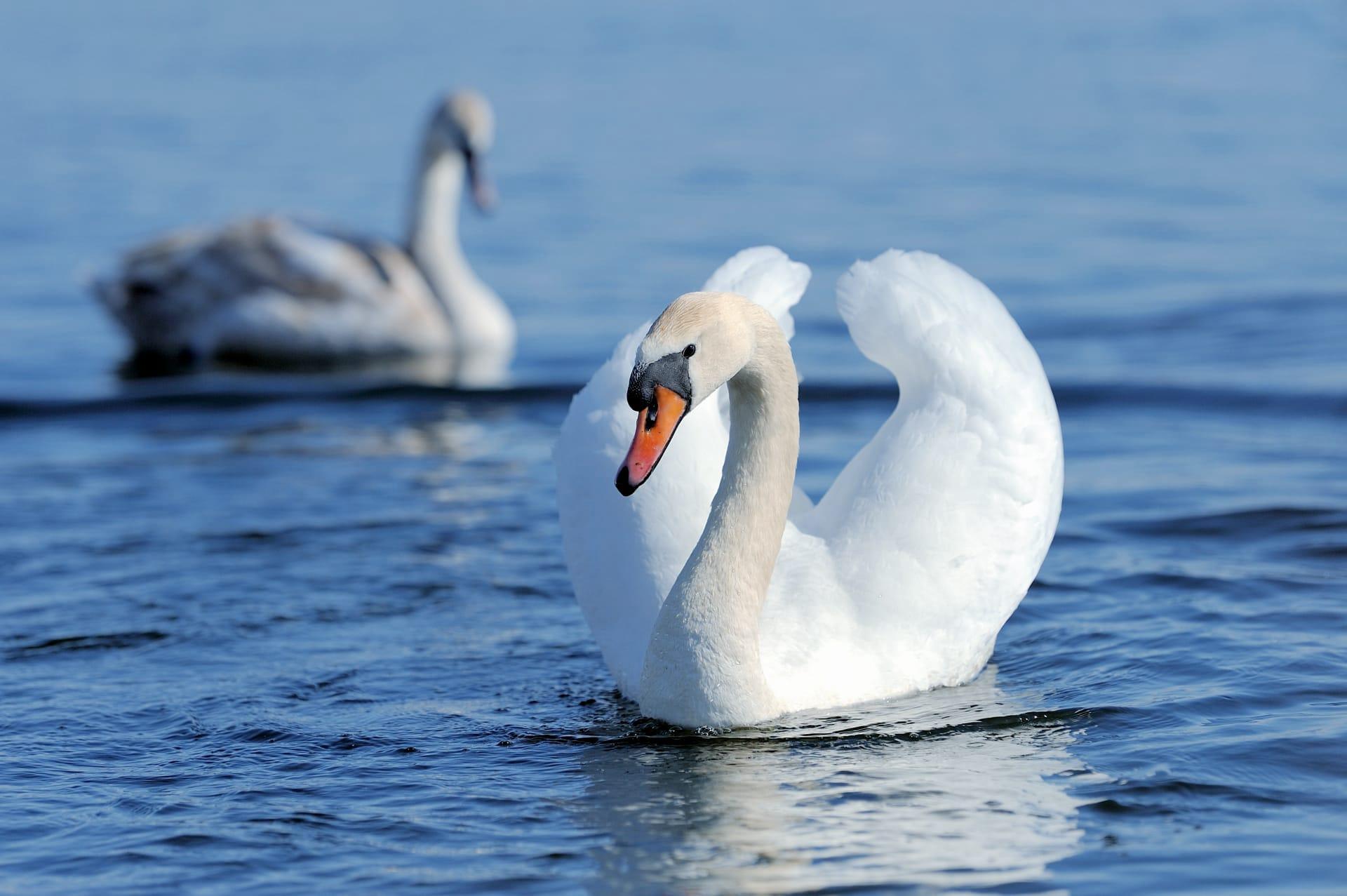Swan
- Home /
- Mini Encyclopedia /
- Animal /
- Swan
1
Swans, those majestic birds often associated with grace and beauty, belong to the Anatidae family, which also includes geese and ducks. Scientifically, they are classified into six to seven species, depending on the taxonomic viewpoint. The most renowned species include the Mute Swan, known for its curved neck and orange bill with a distinctive black base; the Trumpeter Swan, famed for its loud, trumpet-like call; the Tundra Swan, recognizable by its smaller size and 'whooping' sounds; the Black Swan, native to Australia with its unique dark plumage; and the Bewick's Swan, a subspecies of the Tundra Swan, smaller in size and with more rounded head shape.
Swans are found across various parts of the world, adapted to different environments. The Mute Swan is prevalent in Eurasia, often spotted in the wetlands of Europe and Asia. The Trumpeter and Tundra Swans are native to North America, with the Trumpeter Swan mainly in the northern United States and Canada, while the Tundra Swan breeds in the Arctic tundra and winters in the coastal United States. The Black Swan is indigenous to Australia, often found in wetlands, and has been introduced to New Zealand and Europe. Bewick's Swans inhabit areas in the Arctic tundra of Russia and migrate to Western Europe during winter.

2
Question: Do swans sing a beautiful song before they die, as the legend of the 'swan song' suggests?
Answer: The myth of the swan song dates back to ancient times, but in reality, swans are not known for singing melodious tunes before their death. Swans do vocalize, with each species having a range of sounds. The Mute Swan, contrary to its name, is capable of making various sounds including hissing and grunting, especially when threatened. The Trumpeter Swan produces loud, trumpet-like calls. These vocalizations are part of their natural behavior and communication, but the romanticized notion of a swan singing a melodious tune at the end of its life is purely a myth.

3
Swans have adapted several survival strategies to thrive in their environments. One key aspect is their territorial behavior. Swans, especially during breeding season, are fiercely territorial. They use their size and strength to defend their nesting area from intruders. This territoriality ensures a safe space for raising their young. Another survival strategy is their diet flexibility. Swans are omnivorous, feeding on a mix of aquatic vegetation, small fish, and insects. This varied diet allows them to adapt to different food sources available in their habitats. Additionally, swans are known for their strong monogamous pair bonds. This bonding plays a significant role in their survival, as pairs work together in nest building, incubating eggs, and raising their cygnets, increasing the chances of their offspring’s survival.
Swans also have impressive physical adaptations. Their long necks enable them to feed in deeper waters, giving them access to food sources that other birds can't reach. Their webbed feet make them powerful swimmers, an essential skill for foraging and escaping from predators. Swans also have a thick layer of down, providing excellent insulation during colder months, crucial for species living in harsh climates like the Tundra and Trumpeter Swans.

4
In the ecosystem, swans play several roles that highlight their importance. As large waterfowl, swans are significant consumers of aquatic vegetation. This feeding behavior can help control and maintain the health of aquatic plant life, preventing overgrowth and maintaining a balanced ecosystem. Additionally, their feeding habits can also help in seed dispersal, contributing to the spread of various plant species across their habitats.
Swans also serve as indicators of environmental health. Their presence and condition in a habitat can reflect the overall health of the ecosystem. Being at the top of their food chain, any decline in swan populations can signal potential problems in the environment, such as pollution or habitat destruction. Furthermore, swans have an aesthetic and cultural value. They are often featured in literature, art, and folklore, symbolizing beauty, grace, and love. Their presence enhances the natural beauty of their habitats, attracting nature enthusiasts and contributing to ecotourism.

5
Film: "Flight of the Swans" is a notable documentary produced in the United Kingdom in 2016. This film follows the journey of Sacha Dench, who paraglided over 7,000 kilometers across Europe and Russia, tracing the migratory route of the Bewick's Swans. The documentary highlights the challenges these swans face, including habitat loss and climate change, providing an insightful look into the lives of these elegant birds and the efforts to conserve them.
Book: "The Trumpeter Swan" by E.B. White, published in the United States in 1970, is a classic novel that charmingly portrays the life of a Trumpeter Swan named Louis. This heartwarming tale, filled with adventure and emotion, captures the essence of the species' characteristics and behaviors, making it a delightful read for both children and adults.
Book: "Swan: The Life and Dance of Anna Pavlova" by Laurel Snyder, published in the United States in 2015, is a beautifully illustrated biography. It intertwines the story of the famous Russian ballerina Anna Pavlova with the elegance and grace of swans, a creature she was famously associated with through her performance of "The Dying Swan." This book provides an artistic and poignant perspective on swans, highlighting their influence in the world of dance and culture.